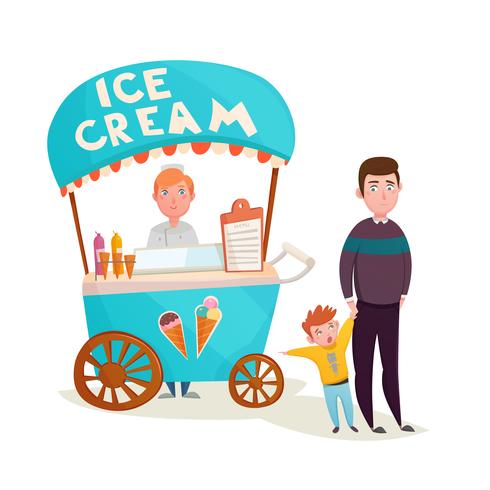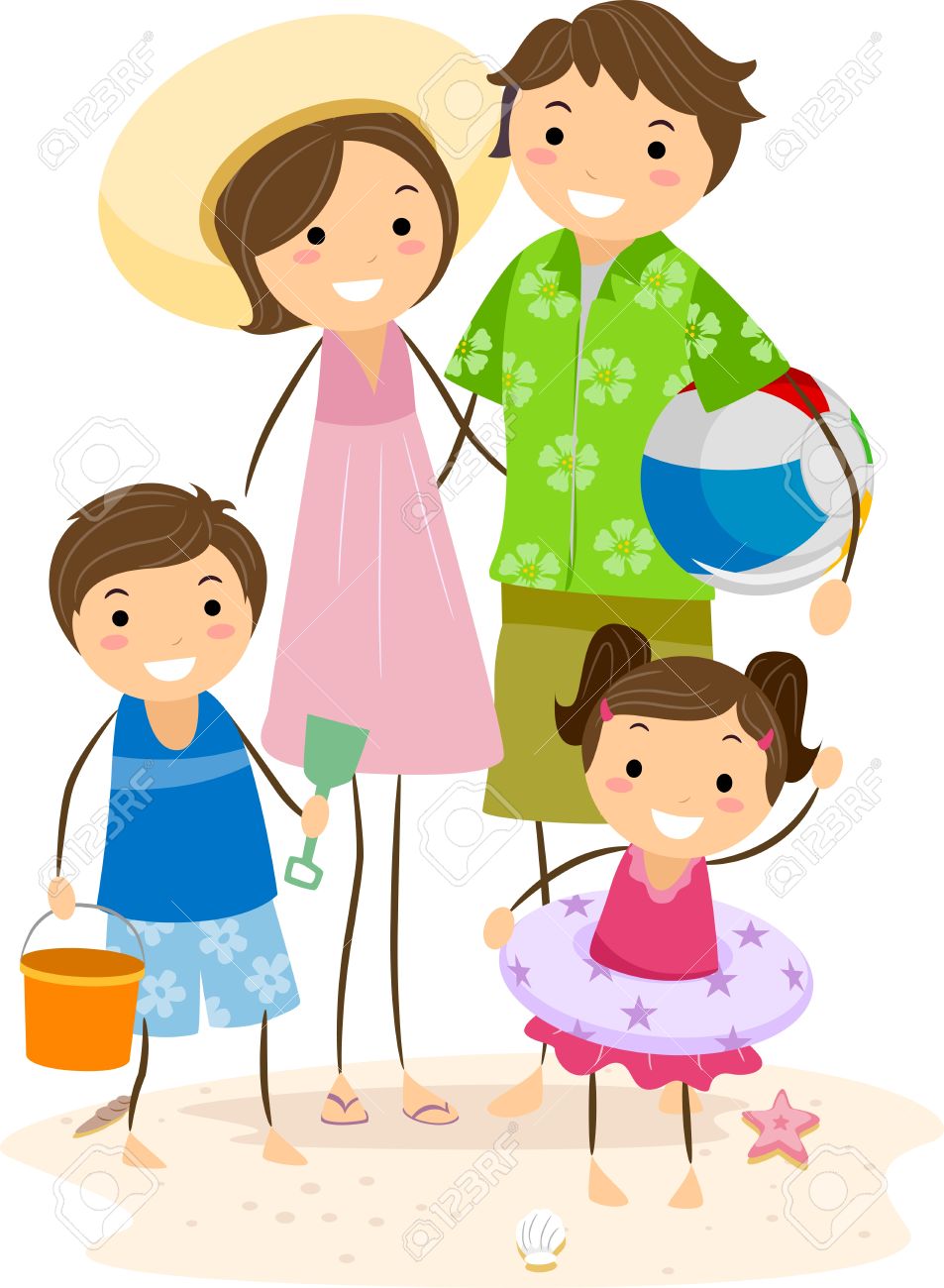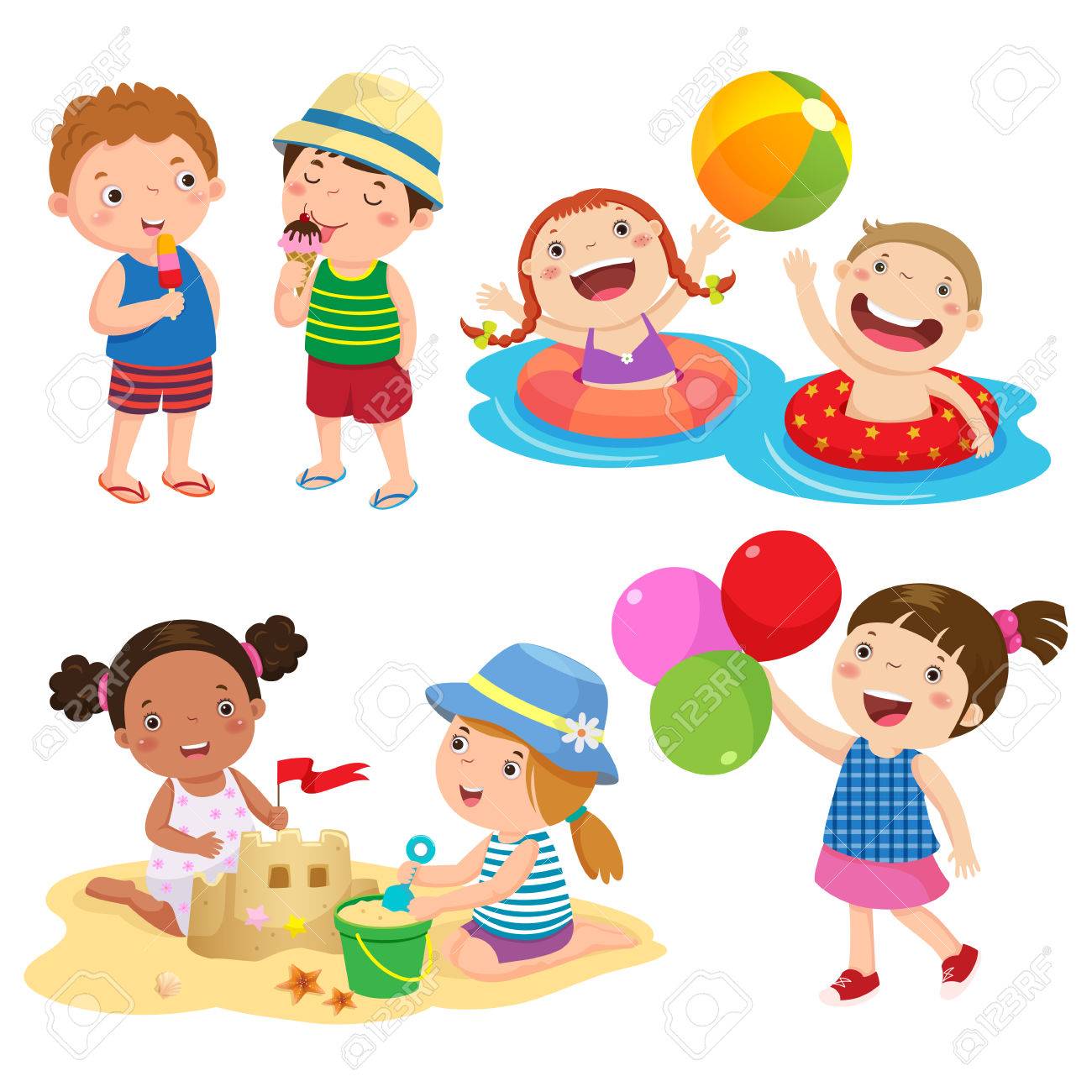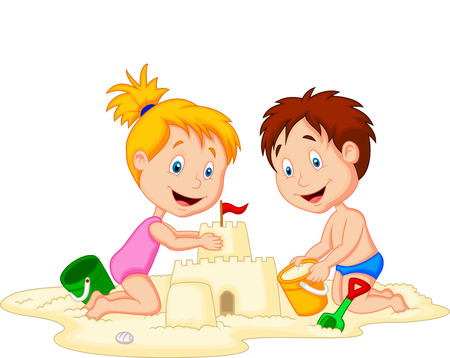Grammar - Tenses- Present Continuous Tense
Present Continuous Tense
is used
to talk about
actions
that have begun and not yet finished at the time of speaking
Today
Kurulu is joining again with us to continue our discussions
Present Continuous Tense
Let’s begin
As you all know Kurulu goes to the beach every weekend. Today is Sunday and she is at the
beach now. The sun is shining brightly in the sky. They all are enjoying a sunny day at the
beach. Vihanga, her elder brother is flying a kite. Is he enjoying it? He is enjoying it very much. Her little
brother Pavan is riding a pony. Her father is walking beside him. Pavan is enjoying the ride happily. Her friends Smanali and Sepalika are building sand castles.
Kokila and Pavan are playing with a ball. Kokila is throwing the ball and Pavan is catching. Some people are bathing in the
sea. What is Kurulu doing now? Is she collecting sea shells? She is not collecting shells now. Kurulu is sitting and watching the rolling waves in the sea. Who is collecting sea shells? Sandaras is
collecting sea shells. Some children are collecting seashells on the beach.
They are not idling a single moment. Their mother is sitting on a rock. She is watching them at play. An ice-cream seller is standing under a tree. He is selling ice
cream. A Kadala vendor is also selling Kadala. Children are
running to buy ice-cream and kadala. The
sun is setting. The birds are flying to their nests.
They all are
getting ready to go home. It is an
enjoyable day.
Kurulu and others are doing some actions at the beach.
Those actions
are happening right at this time.
The actions are continuing at the time we are speaking about them.
Therefore
we use
Present Continuous Tense
to talk about them.
Read the sentences taken from the paragraph above paying attention
to how the verb is used in the sentences.
They say what is happening
at the beach now.
The sun is shining brightly in the sky.
They all are enjoying a sunny day at the beach.
Vihanga, her elder
brother is flying a kite.
Is he enjoying it?
He is enjoying it very much.
Her little brother
Pavan is riding a pony.
Her father is walking beside him.
Pavan is enjoying the ride happily.
Her friends Smanali and
Sepalika are building sand castles.
Kokila and Pavan are playing with a ball.
Kokila is throwing the ball and Pavan is catching.
Some people are bathing in the sea.
What is Kurulu doing now?
Is she collecting sea shells?
She is not collecting shells now.
Kurulu is sitting and watching the rolling waves in the sea.
Who is collecting sea shells today?
Sandaras is collecting sea shells.
Some children are collecting seashells on the beach.
They are not idling a single moment.
Their mother is sitting on a rock.
She is watching them at play.
They are not idling a single moment.
An ice-cream seller is standing under a
tree.
He is selling ice cream.
He is selling different kinds of ice-cream.
A Kadala vendor is also selling Kadala.
Children are running to buy ice-cream and kadala.
The sun is setting.
They are getting ready to go home.
All these sentences talk about
Actions happening
Actions not happening
They are not idling a single moment.
We can also ask
Questions about actions happen

What is Kurulu doing
now at the beach?
Is she collecting sea shells?
Who is collecting sea shells today?
Do you
notice any difference in the use of the verb?
Yes,
there is a difference.
There are two words in the verb
The main
verb
is used with a helping
verb and ing is added at the end
Kokila and Pavan are playing with a
ball.
The helping
verbs, am,
is and
are shows
that the action is happening in the present time and the suffix ing shows that the action is continuing
or not yet finished.
Let’s look at how Present Continuous Tense sentences are formed.
When talking about actions happening we use
Subject + helping verb + verb + ing + Object / Adverbial
If the subject is singular, or if we talk about one person, we use
Subject Singular + is + verb + ing + Object / Adverbial
Pavan is enjoying the ride happily.
More examples

Her brother is playing with a ball.


Ice cream seller is selling ice
cream.
If the subject is
plural, or if we talk about more
than one person we use
Subject Plural + are + verb + ing + Object / Adverbial
They
are enjoying a sunny say at the beach.
More examples

The girls are collecting sea shells.

The children are building sand castles.

The children are playing with a
ball.
If the subject is
I, or if we talk about one’s own
self
Subject + am + verb + ing + Object / Adverbial
I
am watching the waves
happily.
Do the following activities
Activity
1
Fill the blanks with the present continuous form of the verb.
Use the verb stems in the brackets.
1
- The birds…..... …………………. in the sky.(fly)
- Some tourists …… ………………… along the beach. (run)
- Kurulu’s father …… ……………..beside the pony.(walk)
- The children …… ………………… ice-cream.(eat)
- The boats ….. …………….. on the sea.(sail)
- I ......... .................... the waves rolling.(watch)
Remember!
When we use a pronoun as the subject,
If the subject is I we use the helping verb am
If the
subject is He, She and It we use the helping verb is
If the
subject is You, We and They we use the helping verb are
The spelling rules when adding ing to the verb
If the verb
ends with the letter e drop it and add ing
No e
Examples
come -
coming
give - giving
hide – hiding
If the verb
ends with the letter, g ,m , n , or t (with a short vowel sound before
it ) double that letter and add ing
Double g , m
, n & t
Examples
dig – digging
swim – swimming
run – running
cut - cutting
But if there is a long vowel sound
before it
just
add ing
Examples
roam – roaming
open – opening
eat – eating
Do the following activities
Activity 2
Fill the blanks with the present continuous form of the verb.
Use the verb stems in the brackets
- Kurulu’s younger brother ….. …………………… a pony
.(ride)
- Kurulu ……
………. in a village near the beach these days. (live)
- Pavans’ father ……………. ……………. With him (come)
- The ice cream
seller ….. ………………. ice-cream to the children(give)
- The boys
…….. ……… kites.(make)
- I ………… ……………….. my car towards the beach.(drive)
Activity 3
Fill
the blanks with the present continuous form of the verb. Use the verb stems in
the brackets
- Kurulu’s mother ….. …………………… on a rock. .(sit)
- Some tourists …… ………. in the sea now. (swim)
- Kurulu’s friends … ……..…...ready to build sand
castles (get)
- Sandaras ….. ………………. Hole on the sand.(dig)
- The boys …….. ……… to by ice-cream.(run)
- I …………
……………….. shutters of my car .(shut)
When talking about actions that are not happening
we use
Subject + helping verb +not + verb + ing + Object / Adverbial
If the subject is
singular, or if we talk about one
person, we use
Subject Singular + is + not + verb + ing + Object / Adverbial
kurulu is not collecting sea shell at the beach.
More examples

Vihanga is not
riding a pony at the beach.

Her brother is not having a bath.
Her mother is not eating an
ice cream.

If the subject is
plural, or if we talk about more
than one person, we use
Subject plural + are + not + verb + ing + Object / Adverbial
Kurulu’s brothers are not collecting sea shell at the
beach.
More examples
The girls are not riding ponies at the beach.

Her brother and sisters are not having a bath.
Her mother and father are not eating an
ice cream.

Do the following activities
Activity
4
Change the following sentences
in to negative form.
- The birds are flying in the sky.
- Kurulu’s mother is making sand castles.
- Kurulu is collecting sea shells.
- The ice-cream seller is selling cool drinks at the beach.
- Vihanga is buying kites.
- You are building the sand castles well.
When asking about actions happening
(interrogative form) we use
Am , Is & Are
There are two types of question that we can ask
they are
‘yes, no’ questions
‘information’ questions
‘Yes, No’ Questions
they are
‘yes, no’ questions
‘information’ questions
‘Yes, No’ Questions
We form ‘yes, no’ questions in
the present simple by adding the auxiliary
Am , Is & Are before
the subject of the verb.
What are ‘yes, no’ questions?
They are the questions which
get either yes or no as the answer.
If the subject is
singular, or if we ask about one
person, we use
Is + Subject
Singular + Verb + ing + Object / Adverbial
Is she collecting sea shells now?
No, she is not collecting shells now.
More examples
Is Pavan enjoying the ride?
Yes, he is enjoying
the ride.
Is mother
eating an ice-cream?
No, she is not eating
an ice-cream.

Is Vihanga
flying a kite?
Yes, he is flying a kite.
If the subject is
plural, or if we ask about one
person, we use
Are +
Subject plural + Verb + Object / Adverbial
Are they flying
kites?
Yes, they are.
More examples
Are the children buying ice-cream?
Yes, they are.

Are they building sand castles?
Yes, they are.

Are the children bathing in the sea?
No, they are not.
If the subject is I, or if we talk about one’s own self
Am +Subject + verb + ing + Object / Adverbial
Am I watching the waves happily?
Do the following activities
Activity 5
Make questions to get the following as the answers.
- Yes, the birds are flying in the sky.
- No, kurulu’s mother is not making sand castles.
- Yes, Kurulu is collecting sea shells.
- No, the ice-cream seller is not selling cool drinks.
- Yes, Vihanga is flying a kite.
- Yes, you are building the sand castles well.
- No, I am not coming to the beach.
- No, the children are not sun bathing.
‘Information’ Questions
We form ‘information’ questions in the present continuous by adding a question word before the auxiliary am, is and are before the subject of the verb.
We form ‘information’ questions in the present continuous by adding a question word before the auxiliary am, is and are before the subject of the verb.
What are ‘information’ questions?
They are the questions which
get certain information as the answer.
When asking information questions we use a question word according to the information we want.
Example
if we want to know about:
someone - Who
something - What
a place - Where
If we are asking something about a singular subject we use is after the question word and if the subject is plural we use are. We also use am if the subject is I
Example
if we want to know about:
someone - Who
something - What
a place - Where
If we are asking something about a singular subject we use is after the question word and if the subject is plural we use are. We also use am if the subject is I
If the subject is
singular, or if we ask about one
person, we use
Question word + is +Subject + Verb+ ing + Adverbial
What is she collecting now?
She is collecting seashells now.
More examples
Where is mother sitting at the beach?
She is sitting on a rock.
What is pavan riding?
Pavan is riding a pony.
If the subject is plural, or if we ask about more than one
person, we use
Question word + are +Subject + Verb+ ing + Adverbial
What are the children buying at the
beach?
More examples
What are the children building?
They are building sand castles.

Where are they bathing?
They are bathing in the sea.
Do the following activities
Activity 6
Make
questions to get the highlighted word or phrase as the answers.
- The birds are flying in the sky.
- Kurulu’s
mother is not
making sand castles.
- Kurulu is collecting sea shells.
- The ice-cream seller is selling ice-cream at the beach.
- Vihanga is buying two kites.
- You are building the sand castles well.
- I am not coming to the beach by my car.
- They are enjoying a lot because it is a sunny day.
Remember!
There are certain verbs that do not usually appear in the continuous
form
What are they?
Mental
states:
Believe
Know
Understand
Realize
Recognize
Suppose
Wants
& likes:
Want
Like
Love
Hate
Need
Prefer
Appearance:
Appear
Seem
Look like
Example
sentences
We say,
I know
him very well.
Not
I am knowing him
very well.
Kurulu seems happy
today.
Not
Kurulu is seeming happy today.
I love my mother very much.
Not
I am loving
my mother very much.
Important points to remember!
Present Continuous Tense is used to express changes in people and the world around us
Examples
The p rice of fuel is rising.
Kurulu is growing taller every day.
Vihanga is getting better.
It also expresses repeated actions with always
Examples
he is always forgetting his spectacles.
Vihanga is always complaining about his brother.
Pahan is always bringing his own laptop to the class.
Present Continuous also speaks about things in the future that we or someone else has arranged
Examples
Kurulu is going to Kandy tomorrow.
My friend is having a party tomorrow evening
I'm going for a movie tonight.











Comments
Post a Comment